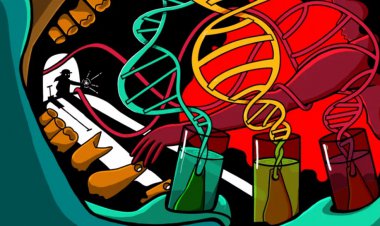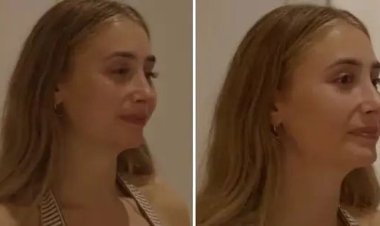Synthetic Morphology Lets Scientists Create New Life-Forms
The emerging field of synthetic morphology bends boundaries between natural and artificial life

In the collection of the Peabody Museum at Harvard University reside the mummified remains of a very peculiar creature. It has the shrunken head, torso and arms of a monkey, but from the waist down, it is a fish. This bizarre hybrid was bought by Moses Kimball, founder of the Boston Museum, from the family of a sea captain. Kimball leased it in 1842 to the impresario P. T. Barnum for his popular American Museum in New York City. Barnum claimed it was a mermaid found in Fiji.
In fact, such artifacts, typically intended for sale, were made from animal parts by fishermen and artisans in Japan at the time (although some of the mermaid seems to be fashioned from papier-mâché). Mythical hybrid beasts such as mermaids, centaurs and chimeras testify to our enduring fascination with the plasticity of biological form: the idea that natural organisms can mutate or be reconfigured. Both in legends and in fiction, from H. G. Wells's 1896 novel The Island of Doctor Moreau to the 2009 movie Splice, we seem inclined to imagine living organisms as assemblies of parts that can be shuffled and rearranged at will.
But a crude stitching of components will not produce a viable organism. Bodies aren't a collection of arbitrary pieces; a human embryo grows into a being with the standard features of a human body, all the parts working in synchrony. Biological forms seem to have inevitable, unique target structures.
An emerging discipline called synthetic morphology is now questioning that notion. It asks how, and how far, the natural shapes and compositions of living matter can be altered. The goal is not to create grotesque creatures such as the Fiji Mermaid but to understand more about the rules of natural morphogenesis (the development of biological form) and to make useful structures and devices by engineering living tissue for applications in medicine, robotics, and beyond.
Synthetic morphology might be considered the next stage of synthetic biology. The latter discipline has racked up impressive achievements in retooling cells for nonnatural tasks—for example, programming bacteria to glow in the presence of pollutants and other chemicals. Much of synthetic biology involves genetic engineering to introduce networks of genes that give cells new functions, such as manufacturing enzymes to make a nonnatural molecule.
Synthetic morphology works at the next level: controlling the shapes and forms into which many cells will assemble. Using the cells of multicellular organisms (like us), the technology might allow scientists to design entirely new tissues, organs, bodies and even organisms by exploiting the tremendous versatility and plasticity of form and function that seem to reside in living matter. The possibilities are limited only by our imagination, says bioengineer Roger D. Kamm of the Massachusetts Institute of Technology. We might design a novel organ, for instance, that secretes a particular biomolecule to treat a disease, similar to the way the pancreas secretes insulin. It could have sensor cells that monitor markers of the disease in the bloodstream, akin to controlled-release implants already used to administer drugs—but alive. Or, Kamm says, we could make “superorgans” such as eyes able to register ultraviolet light outside the visible spectrum.
Ultimately we can imagine creating entirely new living beings—ones shaped not by evolution but by our own designs. “By studying natural organisms, we are just exploring a tiny corner of the option space of all possible beings,” says biologist Michael Levin of Tufts University. “Now we have the opportunity to really explore this space.” Synthetic morphology poses deep questions that challenge the status quo in biology: Where does form come from? What rules has evolution developed for controlling it? And what happens when we bypass them? Doing so could turn on their heads our traditional notions of body, self and species—even of life itself.






















